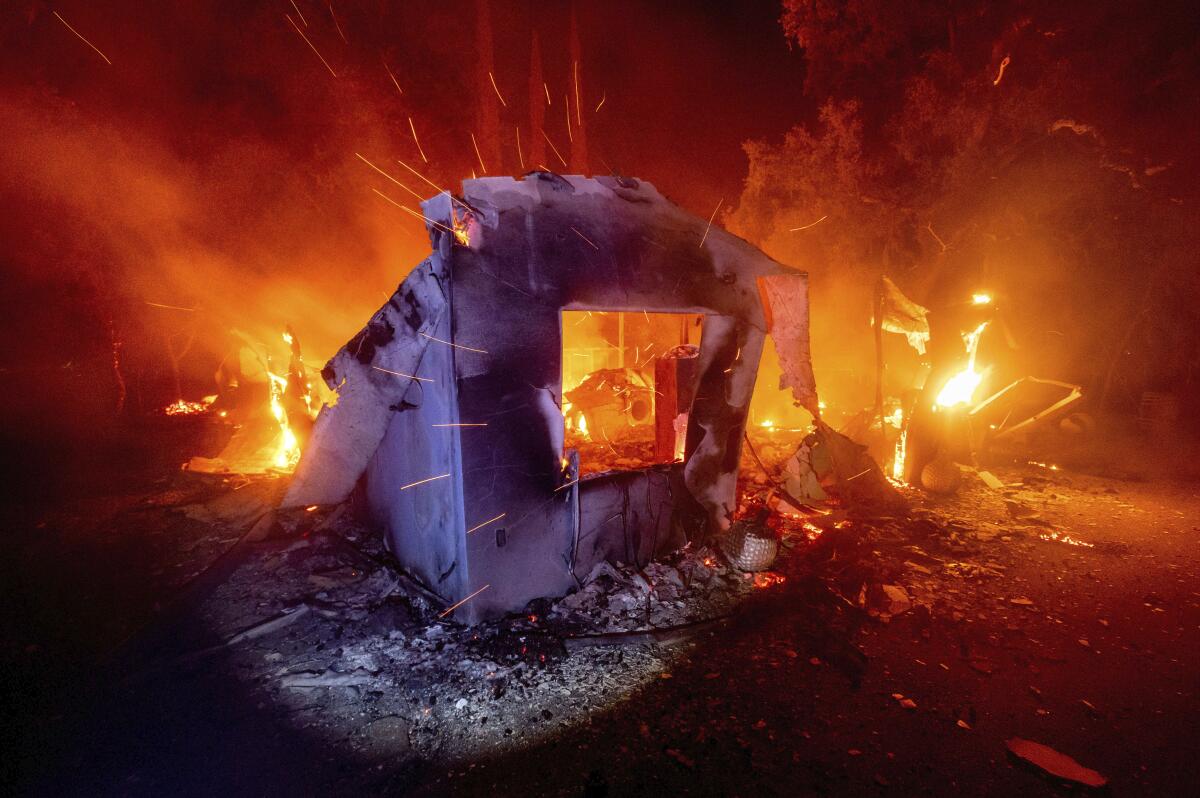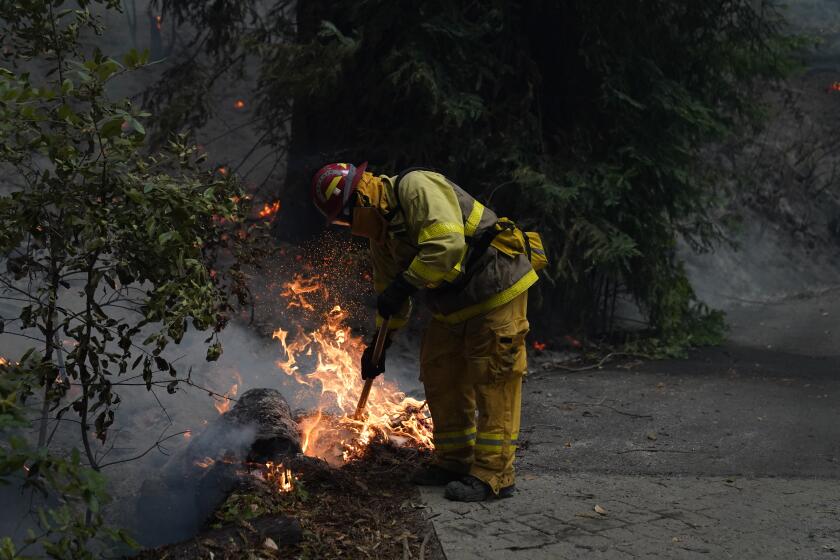Op-Ed: Pandemics spread like wildfire, and fire is a contagion too

- Share via
As the saying goes, pandemics spread like wildfire. But it is equally true that wildfires spread like pandemics. COVID-19 and landscape fire are both biologically based, both break out when people and nature get out of whack, and both propagate according to the same exponential dynamics of transmission. The coronavirus pandemic is viral contagion; wildfire is a contagion of combustion.
Similar strategies for containment apply. Wear masks to prevent dispersion by aerosols? That looks like hardening houses against embers, the primary means of igniting structures. Practice social distancing? That’s like defensible space, keeping receptive fuels away from ignition sources. Rely on herd immunity? That could be a matter of setting enough good fires to contain the bad ones. Mandate compliance? Fire, too, is a social threat to public health and safety that can’t depend on individual whim. I may comply but I’m still at risk if you don’t.
The big payoff against contagion comes from systemic preparations. Emergency medicine can cope with a coronavirus surge only if other work flattens the curve of infection. Emergency firefighting can cope with outbreaks on the scale of California’s only if we address that fraction of climate, fuels and ignitions that remain within our reach.
Firefighters saw a welcome respite in dangerous fire weather with the cancellation of a red-flag warning for the Bay Area.
We can eliminate obvious points of contact, such as powerline failures during Santa Ana and Diablo winds. We must tend to landscapes with pre-existing conditions — drained by drought, covered in feral fuels, buffeted by high winds — that can push mundane outbreaks toward lethal outcomes. We must promote community fire-wellness programs and practice routine watchfulness to reduce vulnerability.
Fire experts have offered this kind of advice over (and over and over) again. But many problems (and distractions) clamor for attention. The flames seem to afflict someone else, in another state, another county or a distant continent. Too often various kinds of experts use fire to advance their own agendas, proposing solutions — such as more commercial logging on public lands or simply buying more air tankers and engines — that have little to offer in terms of living with fire and bending the curve of its worst effects. Fire isn’t listening any more than COVID-19 cares about Twitter tantrums.
When I first worked on a fire crew (in 1967), fire was remote from media attention and of scant scientific interest. Large fires were those that reached 5,000 acres and they happened “out West,” a spasm of random danger like a grizzly bear attack. As a science, fire was studied patchily, in forestry programs, and only in order to control it. Wildfire did not rampage into communities, it didn’t consume a million acres at a time, and it didn’t smother San Francisco with smoke.
Our greed (our rambunctious burning of fossil fuels) and our clumsiness (our neglect of genuinely managing fire on the landscape) now mean that every place is “out West.” Ask Bastrop County, Texas, or Gatlinburg, Tenn., if burned communities are just a California quirk. Places that suffer big burns will experience more and bigger ones, and the narrative is no longer that people are inviting threats by building where the fires are because the fires are going where the people are.
Fire is global. The smoke from Australia’s 2019-20 Red Summer circled the Earth. In one year, Indonesia’s burning peatlands are estimated to release more greenhouse gases than Germany’s average annual emissions. The devastation of California’s 2017 and 2018 fires drove the largest utility in the world’s fifth-largest economy to bankruptcy. Big fires are metastasizing into megafires; fire “busts,” into fire sieges. Add up our fire practices and we are creating the fire equivalent of an ice age: Even climate history has become a sub-narrative of fire history. The maturing Pyrocene is not a pretty sight.
We are the keystone species for fire. Until we began binge-burning fossil fuels, we had managed to live with fire. We need to relearn how to coexist with it because it isn’t going away — it can’t. Unlike for COVID-19, no fire vaccine is possible. At this point in our fire-powered warming world, even as we ratchet down fossil fuel burning, landscape fires will likely ratchet up.
They can be fires of choice or chance. We can have good fires or bad fires. We can ready ourselves to truly manage fire or scramble in blustering incredulity. But the fires are coming.
Stephen J. Pyne is an emeritus professor at Arizona State University specializing in environmental history and the author of 35 books including “Between Two Fires: A Fire History of Contemporary America.”
More to Read
A cure for the common opinion
Get thought-provoking perspectives with our weekly newsletter.
You may occasionally receive promotional content from the Los Angeles Times.











